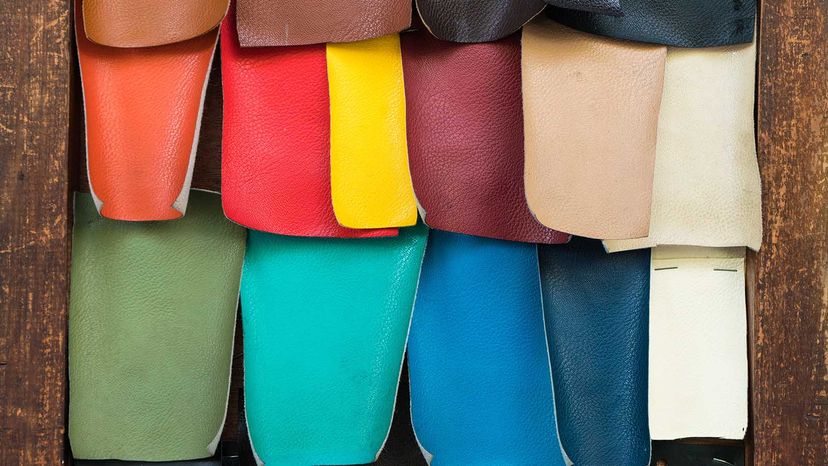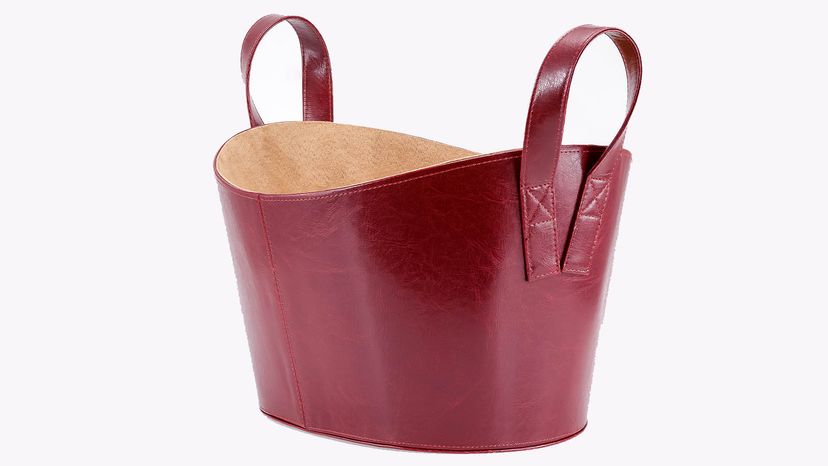
Key Takeaways
- PU (Polyurethane) leather is a more affordable, vegan alternative to genuine leather, boasting benefits like water resistance and easier maintenance, making it suitable for places like kitchens and bars.
- However, PU leather lacks the authentic appearance and texture of leather, doesn't age as well and can suffer from flexibility issues leading to cracking, tearing and color fading over time.
- The manufacturing process of PU leather can sometimes result in an undesirable odor, although some manufacturers attempt to mask this with scents mimicking real leather.
You have a home décor dilemma. You love the look and feel of leather, but you're not too keen on where the material comes from — or how much it can cost. But you really want an option with a similar look, but isn't actually made of animal skin.
You're in luck. While there a lot of leather knockoffs, there is an alternative that offers some of the benefits of the real thing: polyurethane (PU) leather.
Advertisem*nt
Advertisem*nt
Contents
- What Is PU Leather?
- Is It Leather or Not?
- Pros and Cons of PU Leather
- Which Option Is Best for the Environment?
What Is PU Leather?
PU leather is artificial leather polymer made of polyurethane, which is a type of plastic. It's 100 percent vegan because it has no animal skin, unlike genuine leather. If you want to make sure no animals were harmed in the making of your products, just make sure what you buy has no leather mixed in, including bicast leather, which does have animal skin.
According to Dan Weller, founder of Philadelphia-based Liberty Leather Goods, there are two types of PU leather: full-synthetic and semi-synthetic (also known as 100 percent PU leather or split leather, respectively).
Advertisem*nt
Semi-synthetic PU leather is made of a natural leather base with a dried PU plastic mixture on top. The full-synthetic PU leather features a plastic coating applied over a base fabric material, which is usually more plastic or polyester. Only the full synthetic option is totally vegan. Weller says you can usually look at the underside of the material to see what the base material is.
"The PU layer is often stamped with a grain pattern to simulate the look of real leather," he says.

Advertisem*nt
Is It Leather or Not?
One way to tell the difference between real leather and PU leather is to do a water test — meaning dab a few drops of water on the material. Genuine leather will absorb the water and PU leather will not.
You also can tell the difference by looking at the fabric and inspecting it well. Real leather will show some imperfections and feature a genuine grain, whereas PU leather will have an almost perfect, patterned look.
Advertisem*nt
PU leather is becoming more popular, especially as people become more conscious about sustainability and animal ethics. It's commonly used as upholstery — both residential and commercial — including on sofas, headboards, ottomans and in cars. It's also being used as a fashion alternative to leather for handbags, clothing and shoes.
PU versions tout the term "leather" — as do faux leather and vegan leather — but Weller says the name is mostly for marketing purposes.
"These are generally 100 percent plastic, and some vegan leather ... tend to be perceived as higher quality and more expensive, hence, companies can market and sell them for more," Weller explains. "Similarly, in auto upholstery, [some] 'leather' seats are actually just plastic, yet it sounds nicer, and then they can charge more for 'leather seats.'"

Advertisem*nt
Pros and Cons of PU Leather
Obviously, PU leather is not the real thing, so you won't spend as much money for it as you would on genuine leather. Weller says PU leather also is easier and faster to manufacture than the natural version. It's water resistant and easy to clean, as well. This does make PU leather ideal for use in places like kitchens and bars.
But there are some disadvantages of PU leather, too. For starters, it doesn't always look like the real thing, and it will never develop the soft, worn-down look of real leather. PU leather also is less flexible. That can cause cracking and tearing over time, which means a shorter life than you'd get with genuine leather. The color can fade, too, although you'll get more color options than what's available with real leather.
Advertisem*nt
"Over time, faux leather can dry out and crack and flake, resulting in items that can lose function, look worn and be challenging, if not impossible, to repair," Weller says.
And perhaps another reason it is called "PU" leather is that it doesn't always give off the best odor. Weller says it is dependent on the manufacturing process, and some will even infuse scents that mimic the smell of genuine leather to mask the faux leather "fragrance."
Advertisem*nt
Which Option Is Best for the Environment?
Since PU leather is typically made from a plastic polymer, in some cases it can be recycled. And depending on the production process, Weller says it might be less chemical intensive than some natural leather processes and might use fewer resources to manufacture.
"In this more idealistic perspective, PU leather can be made cheaper and faster," he says. "In another context, it is made of plastic (petroleum products), which have negative environmental aspects from extraction and use in materials production."
Advertisem*nt
Sciencetrends.com says unlike real leather, polyurethane leather doesn't need to be tanned. Tanning is a process that can generate pollution from the ammonia and chromium used to make it, so that's a plus, too.
Now That's Interesting
Synthetic leather has several names other than PU leather, including bicast leather, faux leather, leatherette, synthetic leather, artificial leather, skai and pleather.
Frequently Asked Questions
How does PU leather's environmental impact compare to that of real leather?
PU leather generally has a lower environmental impact than genuine leather, as it doesn't require animal farming and uses fewer natural resources, but concerns remain about the use of plastics and chemicals in its production.
Have there been any advancements in PU leather to improve its durability and appearance?
Recent advancements in PU leather technology aim to enhance its durability, flexibility and appearance, making it closer to genuine leather while maintaining its animal-friendly advantages.